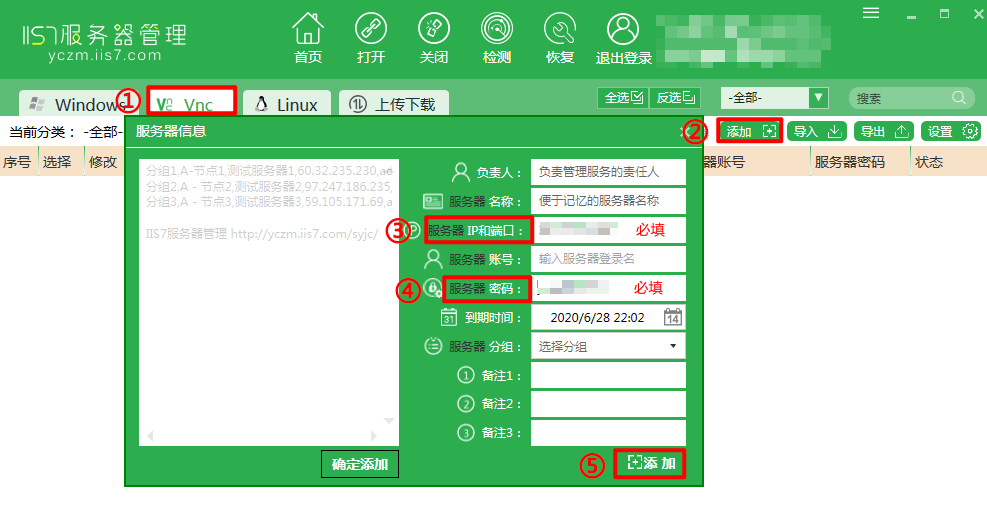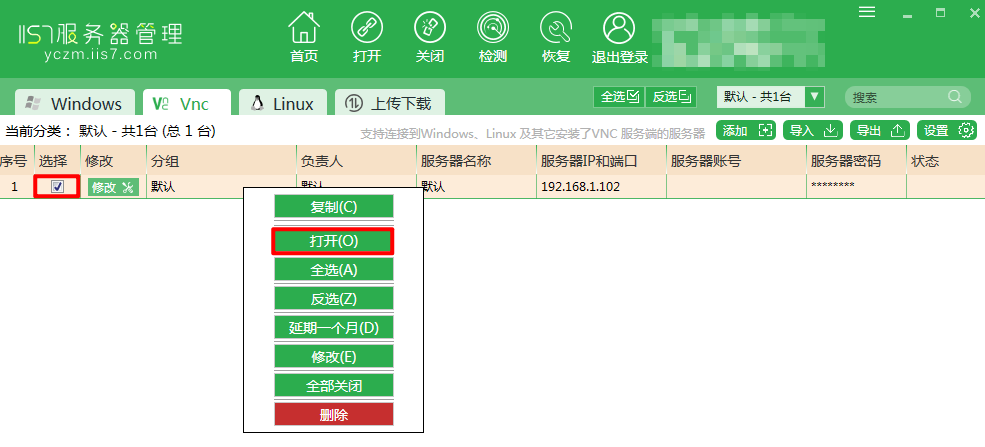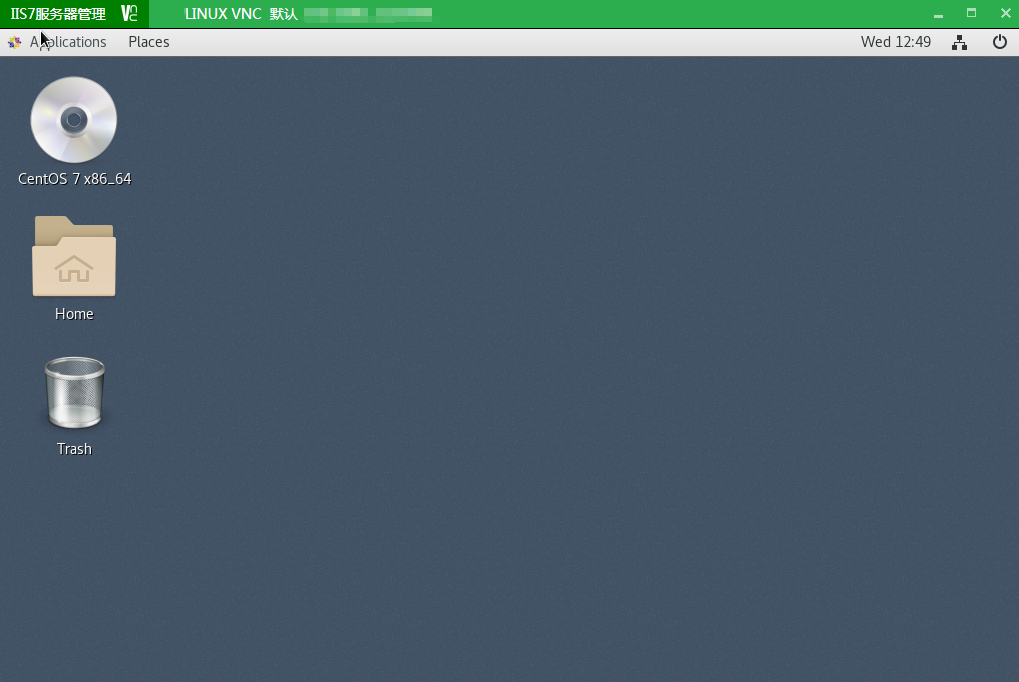VNC introduction
VNC is a remote control tool software. VNC is a free open source software based on UNIX and Linux operating system. It has powerful remote control ability, high efficiency and practicality. iis7 server management tool is a free VNC connection software. It supports batch opening and installation of VNC servers. It can connect multiple VNC installed at the same time for visual operation. It is a very good FTP tool.
VNC connecting Linux
1. Download IIS7 service management tool
Download address: IIS7 server management tools
iis7 server management tool can remotely control the host with vnc server installed.
2. Tutorial

-
Step 1: open the IIS server management tool and click "Vnc" in the main program diagram;
-
Step 2: click "add";
-
Step 3: fill in Vnc information in the pop-up server information box. Note: IP and password are required;
-

- Step 4: select the Linux server to open;

- Step 5: Click to open, and see the Linux rendering immediately.
Linux VNC Server installation
1. Install vnc server
yum install tigervnc-server -y
2. Set as service
cp /lib/systemd/system/vncserver@.service /etc/systemd/system/vncserver@:1.service vim /etc/systemd/system/vncserver@\:1.service ---------------------------------------------------------------------------------------------------------- [Unit] Description=Remote desktop service (VNC) After=syslog.target network.target [Service] Type=forking User=root # Clean any existing files in /tmp/.X11-unix environment ExecStartPre=-/usr/bin/vncserver -kill %i ExecStart=/sbin/runuser -l root -c "/usr/bin/vncserver %i" PIDFile=/root/.vnc/%H%i.pid ExecStop=-/usr/bin/vncserver -kill %i [Install] WantedBy=multi-user.target ---------------------------------------------------------------------------------------------------------- cp /lib/systemd/system/vncserver@.service /etc/systemd/system/vncserver@:2.service vim /etc/systemd/system/vncserver@\:2.service -------------------------------------------------------------------------------------------------------- [Unit] Description=Remote desktop service (VNC) After=syslog.target network.target [Service] Type=forking User=root # Clean any existing files in /tmp/.X11-unix environment ExecStartPre=-/usr/bin/vncserver -kill %i ExecStart=/usr/bin/vncserver %i PIDFile=/home/Amos/.vnc/%H%i.pid ExecStop=-/usr/bin/vncserver -kill %i [Install] WantedBy=multi-user.target
3. Set vnc password. The password of vnc is different from the user password of the system. It is the password needed to log in using vnc viewer.
[root@localhost ~]# vncpasswd Password: Verify: Would you like to enter a view-only password (y/n)? n A view-only password is not used
4. Start the service and open the port
systemctl start vncserver@:1 systemctl enable vncserver@:1 # Set to startup # View the port the service listens on netstat -lnpt|grep Xvnc firewall-cmd --add-port=5901/tcp --permanent firewall-cmd --reload